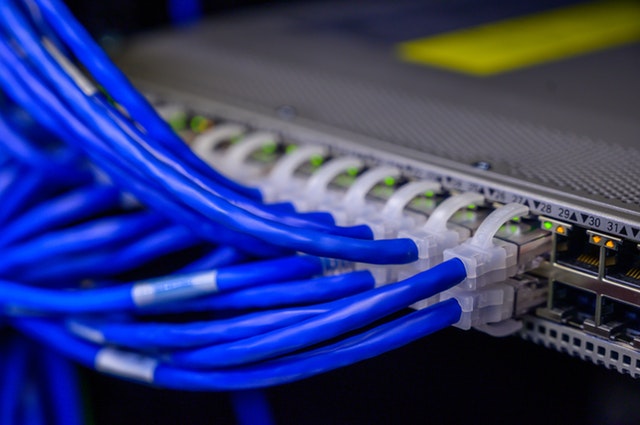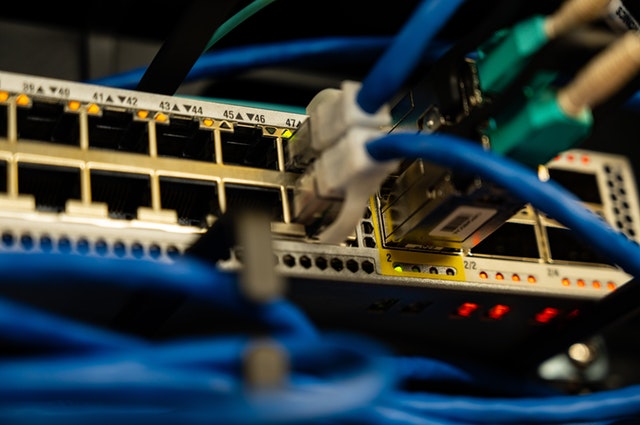 Network configuration is the means of setting up a network’s flow, controls and operation to support the network communication of a company and/or network owner. Similarly, Multi-national companies with advanced network configurations can configure multiple IP addresses on the appliance’s Ethernet ports. The use of multiple ports can augment security or facilitate connections over non-standard networks. For example, if the workforce is restricted from accessing the internet but need to provide off-network support, using one port for an internal private network and another for the public internet consents users worldwide to access systems without violating or breaching the network security policies.
Network configuration is the means of setting up a network’s flow, controls and operation to support the network communication of a company and/or network owner. Similarly, Multi-national companies with advanced network configurations can configure multiple IP addresses on the appliance’s Ethernet ports. The use of multiple ports can augment security or facilitate connections over non-standard networks. For example, if the workforce is restricted from accessing the internet but need to provide off-network support, using one port for an internal private network and another for the public internet consents users worldwide to access systems without violating or breaching the network security policies.
This comprehensive term integrates multiple configuration and setup processes on network software, hardware and other supporting devices and constituents.
Network configuration is also known as network setup. It enables a system administrator to set up a network to meet the determined communication objectives.
The process involves the following undertakings:
- Router configuration: It postulates the correct IP addresses and route settings for a device.
- Host configuration: It sets up a network connection on a host computer/device by logging the default network settings, such as proxy, IP addressing, ID/password, and network name to aid network connection, communication and interaction.
- Software configuration: Any network-based software, such as an intrusion detection system (IDS), has endorsed access and provided with the suitable credentials to supervise network traffic.
Furthermore, network configuration includes Internet/network sharing, software/application installation and firewall installation/configuration.
NIC teaming cartels a system’s physical Network Interface Controllers (NICs) into a single logical interface. NIC teaming manoeuvres in “Active-Backup” approach. In specific, one of the NICs is used to transmit all network traffic. However, on the loss of the link on that NIC for any reason, the other NIC becomes active. Prior to the activation of NIC teaming, one must ensure that both the NICs are connected to the same network segment/subnet and that the IP addresses configured on only one of the existing NICs.
A chief feature of network configuration is its capability to substitute the functions of a network device in the event of failure. Various network devices save configurations in various formats, and discovering configuration information can be difficult when a certain device has to be replaced. By the help of a network configuration management system in place, configuration information will be warehoused in a centrally located server, where device configurations can be undoubtedly downloaded.
Devices that rely on command line interface require a reliable administrator using a customary protocol like the Secure File Transfer Protocol to gain the necessary information. However, backups can also be automated, frequently through a third party.
 Network configuration tools can either be vendor-neutral or vendor-specific. Firstly, vendor-neutral tools are more corporate and are meant for networks comprising hardware and programs from numerous vendors. Secondly, vendor-specific tools typically work only with the products of a solitary vendor and can promise enhanced performance in networks where that vendor monopolises and controls the market.
Network configuration tools can either be vendor-neutral or vendor-specific. Firstly, vendor-neutral tools are more corporate and are meant for networks comprising hardware and programs from numerous vendors. Secondly, vendor-specific tools typically work only with the products of a solitary vendor and can promise enhanced performance in networks where that vendor monopolises and controls the market.
Tools used for configuration can be used for more than just relaunching a device after it crashes. Some configuration management tools trail configuration data on a day-to-day basis to highlight any changes in configuration files, which could expose cyber threats and potential failures. These tools can be used to create bulk changes. For instance, a company could briefly roll out a blanket password change in a case where the password data is leaked. In addition to making modifications in bulk, they can be used for auditing and reporting. Although they do not present information such as memory or CPU performance, they can be used to present exact VPN limits or firewall rules.
Network configuration tools also have reporting capabilities, enabling system staff to easily track and trail information about network components.
In addition, network configuration can rationalise the processes of repair, maintenance, expansion and upgrading. It can reduce configuration faults as part of change management. It also optimises network security. It guarantees that changes made to a device or system do not unfavourably affect other devices or systems. It can also turn back changes to a previous configuration if system updating or replacement efforts are substandard. Lastly, it archives the specifics of all network configuration modifications.
Configuration managers enable you to keep track of the statuses and operations of your network devices. So, a configuration manager needs to:

- Create a configuration baseline
- Backup configuration snapshots
- Monitor for unauthorized configuration changes
- Enable settings rollbacks
- Deliver firmware updates
- Auditing for standard compliance
- Bulk configuration updates
- Firmware patch management
- Customizable user accounts for teams
Network Configuration also includes:
1. Network device discovery
Discovering a device and adding it on to the inventory is the first step in network configuration management. It is noteworthy to keep records of your network devices and their hardware properties. Besides refining the network admin’s visibility into the network devices, an informative inventory will help the admin conduct regular audits.
2. Configuration backup
A network operator must always be ready for a network mishap and the most fundamental element in being ready is taking backup of your device configurations.
3. Configuration change management
It is recommended that one keeps a record of their users to enable easier association of configuration changes. In a network that houses multiple operators, it is crucial to avoid any unauthorized change that might bring about an unfavourable output. While these only cut down the chances of something going wrong on the network, they don’t entirely eliminate the chances of it happening. This is where the configuration backups come into a play. You can readily upload a trusted version of the configuration and restore the device and ensure business continuity.
4. Executing complex network operations
Network Configuration Management includes the execution of many network operations and sometimes these can also be automated. For instance, if you need to change the password of all cisco routers on a network, applying the change to every device individually would be a tedious process. This is where configuration templates that are commonly called ‘confliglets” come into play.
5. Network compliance to industry standards
There are some industry standards to which your network devices must comply to. This is to ensure that your data is secure and to keep your business away from the risk of disputation.